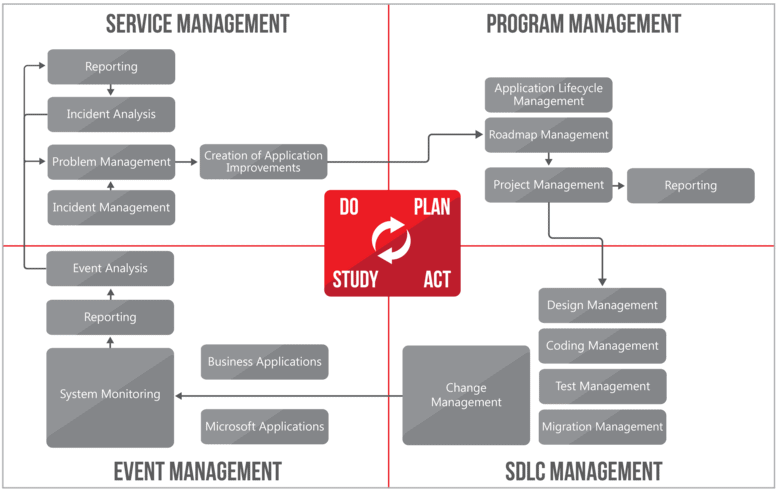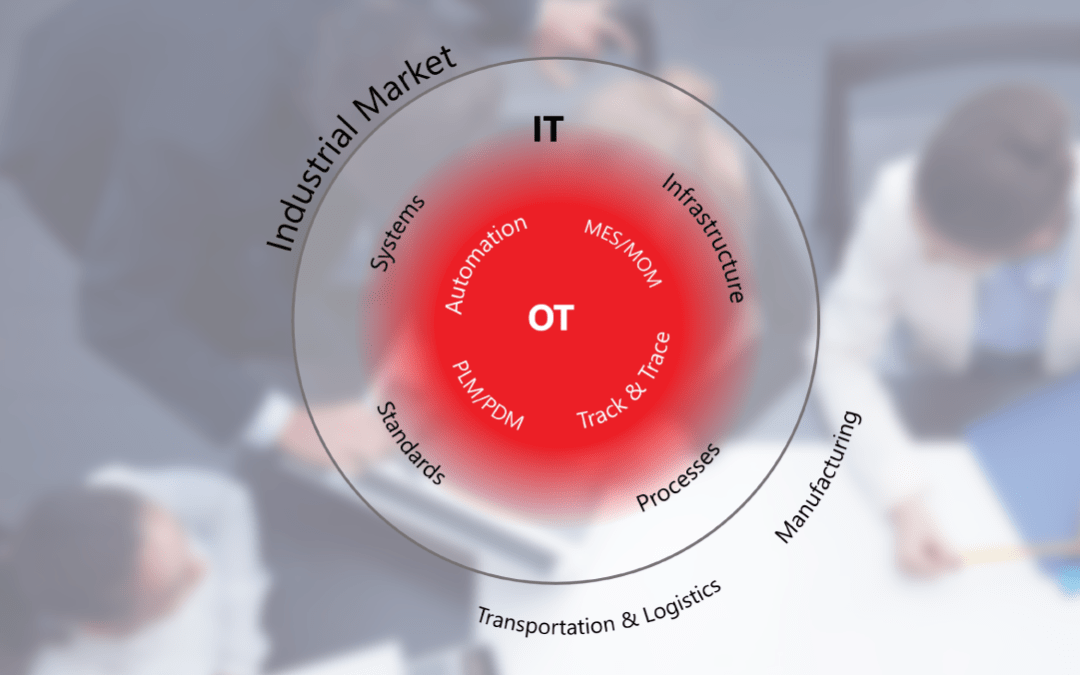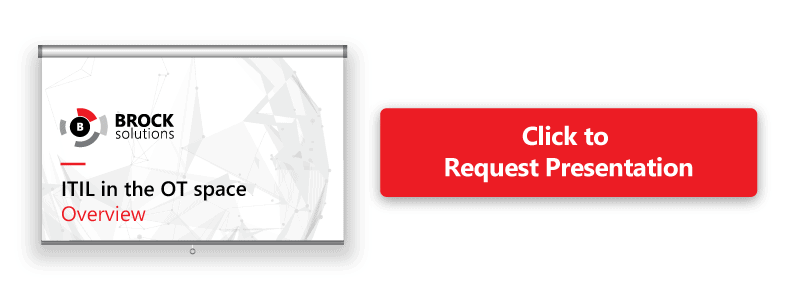… it’s time to get on with IT/OT convergence
At the recent ARC conference that Brock Solutions attended, there were several sessions on IT/OT convergence. Most were well done and had good insight/take home value. While listening to the presentations, I couldn’t help but reflect on my early days at Brock Solutions and my own understanding of IT and OT.
In my former life as a partner at Deloitte Consulting, I was entrenched in the Information Technology (IT) space. When I joined Brock Solutions, however, it was clear that the company’s roots were deeply in the Operations Technology (OT) space. After visiting a few Brock Solutions customers, I was blown away with what I saw — there were DEC PDP 8s in a steel plant, Data General Novas in a warehouse/distribution facility and IBM System 36s in a consumer products company to name a few – and these were all running mission critical operations. From an IT perspective these systems were obsolete when I was a student and believe me that was a very long time ago.
I was totally confused. How could large enterprises still operate in what I considered to be the dark ages? I soon discovered this was the norm, not the exception. But while I still didn’t get it, I couldn’t see this situation being sustainable. So I decided to turn the confusion into an opportunity – that is, become someone that understands both IT and OT. Having remembered reading and enjoying Stephen Covey’s book “The 7 Habits of Highly Successful People”, I decided to put into practice habit #5, Seek First to Understand, Then to be Understood, by visiting as many industrial operations as possible. And of the many valuable lessons I learned during those days, these three stand out the most:
- OT is all about supporting real time operations. And the people responsible for OT will go to great lengths to avoid downtime/disruption
- OT and IT metrics could not be more different. Furthermore, what is valued and prioritized by OT and IT was completely different
- Generally speaking, mutual trust and respect was sorely lacking
So fast forward to 2018 and what do we see? And what has changed? As it turns out, when it comes to deploying advanced digital technology, there are no boundaries. Advanced analytics, cyber security, artificial intelligence, machine learning, augmented reality are all topics and opportunities that don’t have IT/OT boundaries. In fact these technologies, when deployed effectively, impact the entire enterprise …which ultimately means convergence.
So how do we get there? We see two foundational elements – addressing the basics and building trust, respect and credibility.
The Basics. For many organizations there is a laundry list of basic issues that represent barriers to moving forward on the digital journey. These include:
- Tribal knowledge: The digital journey requires knowledge that goes beyond the great experience that most operations folks have. This is largely a change management issue. Recognizing that operating a real time environment without proper systems (i.e. Manufacturing Operations Management/Manufacturing Execution Systems) is not sustainable, is a key step in the digital journey.
- Spaghetti Architecture: I can’t think of one single customer that either had or has islands of automation across their operations. This has largely occurred because multiple independent systems have been implemented to solve specific tasks. Evolving to integrated, end-to-end processes are table stakes for going digital.
- Standards and Processes That Don’t Work for Everyone: “It’s not what you do for me it’s what you do to me” is a quote we often hear from OT about IT, especially around applying patches, virus scanning and on and on..
- Not Staying Current: Many organizations consciously choose to remain on unsupported technology and accept the associated risks for their OT systems. “If it isn’t broken, don’t fix it” approach, which may have worked in the past, may now represent an unacceptable risk. A client of ours recently experienced a multi-day outage when a system running on unsupported technology failed, which resulted in significant cost and customer service issues.
- Ill-defined Resiliency: Many OT environments don’t understand where their systems intersect and where potential points of failure exist.
- Prioritizing One Group Over the Other: The perception that IT gets the $$ is reality in many organizations. ERP rollouts are too often viewed as also addressing OT as well, and when the new ERP systems are turned on, the OT functions just aren’t there.
- Security: When it comes to OT security a client once told me that whenever he hears “secure the perimeter” as the solution he stops listening. Reality is that just about every machine that is deployed on the plant floor has technology that represents a potential security threat and shutting off access is simply not practical. Cyber security is an enterprise challenge, not a functional challenge.
With respect to building trust we have seen several examples of best practices around IT/OT convergence. Irrespective of organization structure, we have seen cross functional teams at both a senior management steering committee level and working team level successfully govern MOM/MES transformations.
IT/OT convergence is not an academic exercise. The bottom line is IT/OT are converging whether we like it or not. OT can no longer isolate itself in order to get the job done. And IT can’t force standards and procedures that simply don’t work in an OT environment.
The best practical example of IT/OT convergence that I can think of is applying Information Technology Infrastructure Library (ITIL) best practices to the OT environment. ITIL is a set of detailed practices for IT service management, and many IT departments of large organizations are ITIL certified. However, what we have discovered is OT is often not in traditional ITIL scope. So in partnership with one of our clients we applied ITIL best practices to OT and the results have been excellent. Metrics and procedures were developed that work for OT and we have seen dramatic improvements in incident management and continuous improvement initiatives. The image below shows how ITIL approaches and language apply to sustaining OT solutions:

Brock Solutions’ OT Sustainment Model Based on the ITIL Framework
The manufacturers that we work with who have embraced IT/OT convergence are getting things done quickly and at the end of the day have the results to show for it. And it’s not overly complicated or about ice cream socials and hugs. It’s about moving past terms like IT/OT convergence and choosing sides and looking for practical initiatives that benefit the enterprise in terms of efficiency and growth opportunities.
At the end of the day the real question is will you manage the change or will the change be imposed on you. The risk is lagging behind in the digital journey. At Brock Solutions, while our roots are in OT, our capabilities have evolved to include and in fact embrace IT. We get it, and we are happy to share our experiences.


